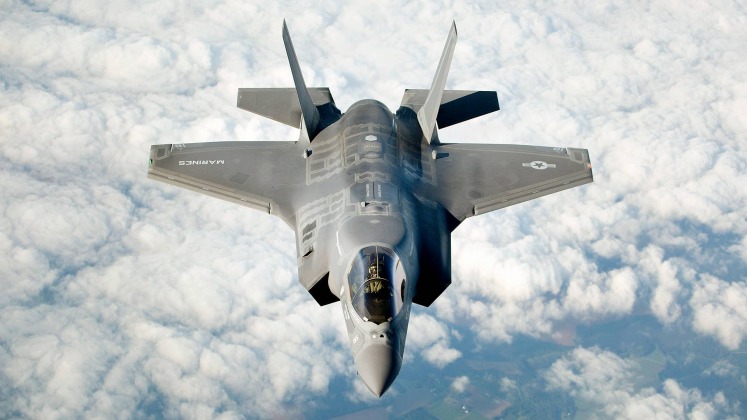News
F-35 Fifth Generation Fighter Finally Begins Full Scale Production After Seven Years of Delays
America’s largest defence contractor Lockheed Martin has begun full scale production of the F-35 fifth generation fighter, following several years of delays due to issues with the program and qualitative issues with the aircraft itself. Pentagon acquisition executive William LaPlante approved this production increase “after considering the results” from operational test and evaluation, live-fire testing, the System Development and Demonstration exit criteria, applicable laws, and future production strategy. The announcement of this milestone in the F-35 program elaborating that this new stage “requires control of the manufacturing process, acceptable performance and reliability, and the establishment of adequate sustainment and support systems.”
The F-35 is forecast to be produced at a rate of 156 aircraft for year for the remainder of the decade, and possibly into the 2030s. This remains far lower than previously projected production numbers, with the U.S. Air Force alone having previously intended to acquire 110 fighters per year. Significantly more were to be acquired by the Navy, the Marine Corps and foreign clients, resulting in production of close to 250 per year. With the Air Force having cut acquisitions to 80, then 60, and finally just 48 aircraft per year, however, production is not expected to exceed 156, despite exports having significantly exceeded expectations.
Approval for full scale production of the F-35 was initially expected to commence from 2017, but has been consistently delayed multiple times over several years. In November 2019, for example, the Pentagon’s leading weapons tester Robert Behler noted that the fighter was still far from ready for combat, particularly highlighting the fact that all variants of the aircraft suffered from low reliability and were prone to breakdowns more often than previously anticipated. While Lockheed Martin’s F-35 Programme Manager Greg Ulmer notably voiced his disagreement with the Pentagon’s assessment at the time, the military ultimately had the final say over the company’s production schedule. In October the following year ongoing issues with the aircraft and with its test simulator led to a further delay to plans to approve production. Subsequently in December the Pentagon postponed a review of its combat capabilities which was a necessary prerequisite to increase the scale of production. The Defence Department’s undersecretary for acquisition and sustainment Ellen Lord cited “technical challenges” as the cause of the delay, alongside the fallout from the COVID-19 pandemic.

Although full scale production has been approved, a separate question remains whether Lockheed Martin can meet production targets, with a range of issues having caused significant production shortfalls including in 2023, while clients ranging from the Belgian Defence Ministry to the U.S. Marine Corps have continued to complain of serious qualitative deficiencies with those aircraft that are produced. A key point of issue raised by lawmakers and officials within the United States has been the aircraft’s very low availability rates and high maintenance requirements, which have allowed even Cold War era F-15 and F-16 fighters worn out by decades of service to remain available at far higher rates than newly built F-35s. While delays developing and procuring the F-35 have forced the U.S. Air Force to rely on Cold War fighters far longer, forcing availability rates down as they have aged in service, the new stealth fighter’s own flaws have meant that those which do transition have often fared little better. This and multiple other issues, including the F-35’s tremendous overruns in operational costs which have reduced the viability of a larger fleet, have led the U.S. Air Force to plan significant cuts to acquisitions and look to alternatives, with one of the most recent options being a derivative of the T-7 trainer.












